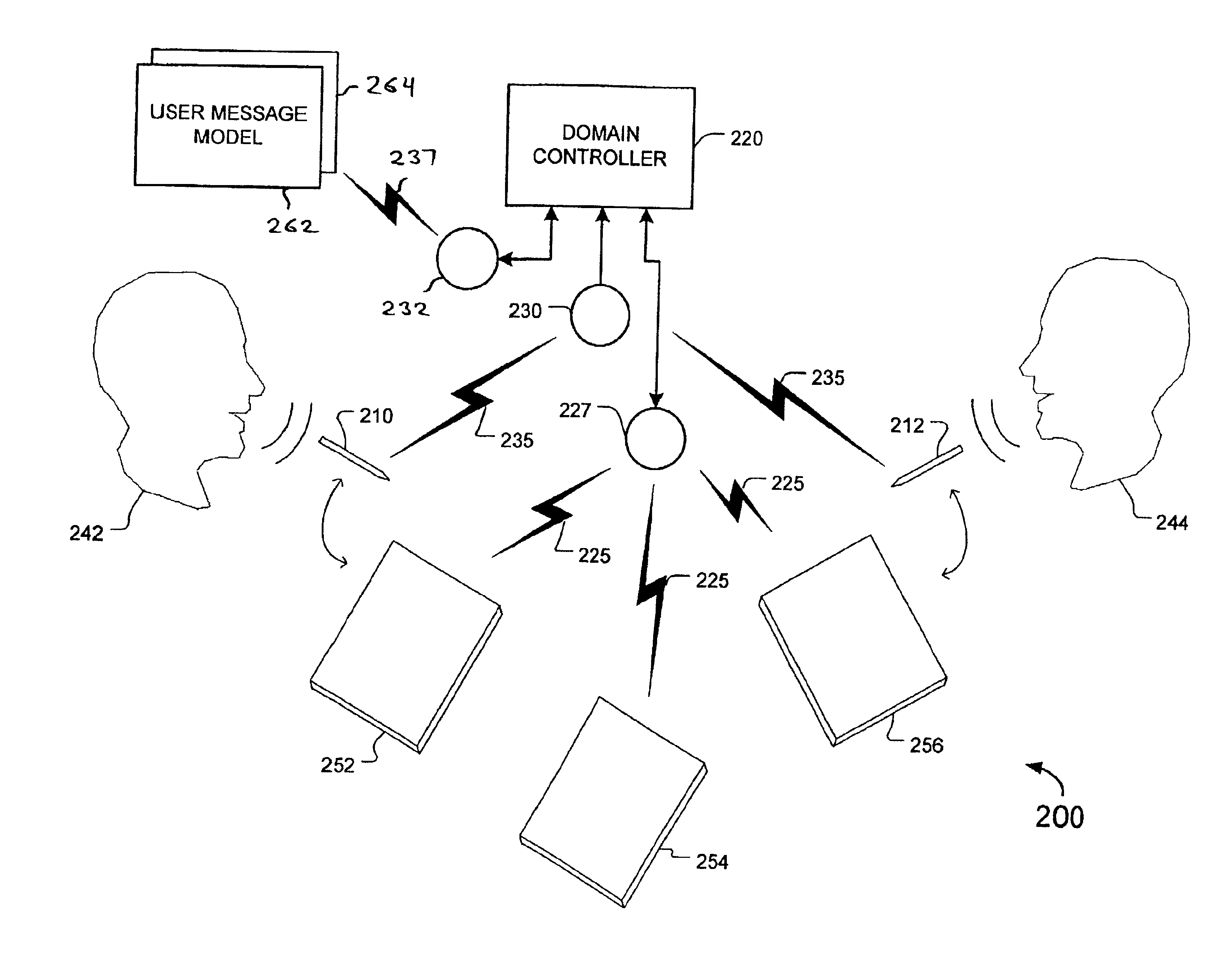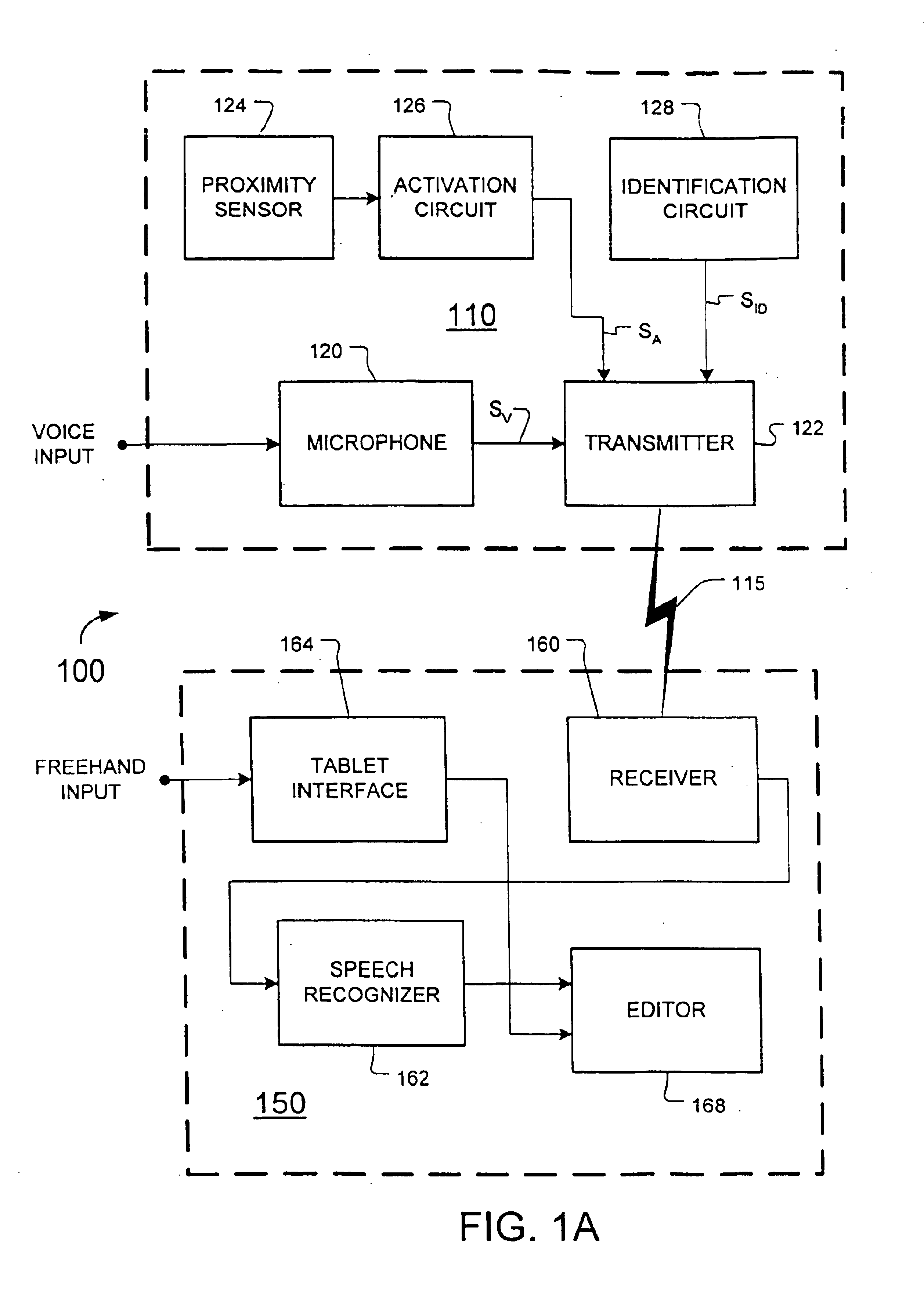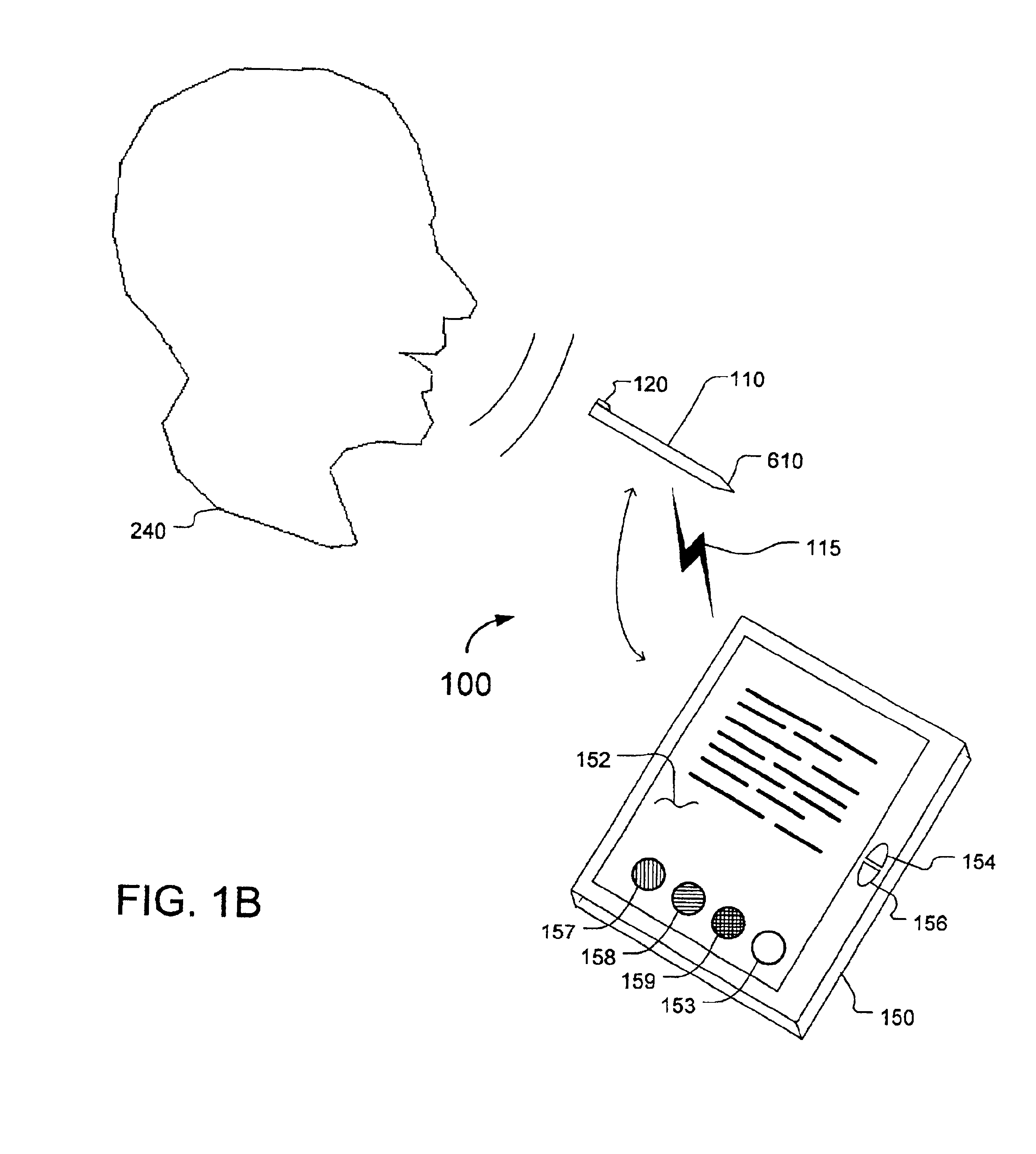Message recognition using shared language model
a language model and language technology, applied in the field of message recognition using shared language model, can solve the problems of slow text data generation, less interest in the system, and inability to recognize text data,
- Summary
- Abstract
- Description
- Claims
- Application Information
AI Technical Summary
Problems solved by technology
Method used
Image
Examples
Embodiment Construction
[0042]A text processing system according to various aspects of the present invention may be responsive to both voice input and freehand input to generate and edit text data. Text data is any indicia of text that may be stored and conveyed numerically. For example, text data may be numerical codes used in a computer to represent individual units (e.g., characters, words, kanji) of text. Voice input may be used primarily to generate text data, while freehand input may be used primarily to edit text data generated by voice input. For example, system 100 of FIG. 1 (including FIGS. 1A and 1B) suitably includes a stylus 110 responsive to voice input and a tablet 150 responsive to freehand input, coupled together via a communications link 115.
[0043]A tablet according to various aspects of the present invention includes any suitable hardware and / or software for performing functions of, inter alia, a speech recognizer and an editor. Tablet 150, for example, may include a conventional CPU and...
PUM
 Login to View More
Login to View More Abstract
Description
Claims
Application Information
 Login to View More
Login to View More - R&D
- Intellectual Property
- Life Sciences
- Materials
- Tech Scout
- Unparalleled Data Quality
- Higher Quality Content
- 60% Fewer Hallucinations
Browse by: Latest US Patents, China's latest patents, Technical Efficacy Thesaurus, Application Domain, Technology Topic, Popular Technical Reports.
© 2025 PatSnap. All rights reserved.Legal|Privacy policy|Modern Slavery Act Transparency Statement|Sitemap|About US| Contact US: help@patsnap.com



